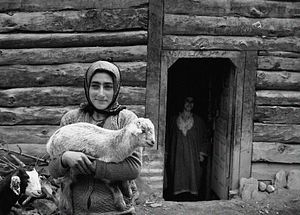Gurez valley is located in the farthest north of Indian-administered Kashmir. Home to 25,000 Dards, who are part of a wider group of Dardic-speaking people spread across the northern areas of Pakistan and Ladakh as well as parts of Afghanistan, Gurez valley remains very isolated – partly because it is enclosed by snow-capped mountains and partly because it is dangerously close to the Line of Control between India and Pakistan. Frequent shelling in this zone between the two South Asian neighbours has not only made this beautiful valley largely inaccessible to visitors, but also to the Dard Shin villagers who have had to flee their homes on the many occasions when hostilities between India and Pakistan spike.
The Dard Shins are believed to be the descendants of the early Aryan settlers who arrived more than two thousand years ago. References to them can be traced back to the writings of Herodotus.
Easily one of the most beautiful parts of the Kashmir valley, Gurez was a favourite spot for Jawaharlal Nehru and his daughter Indira Gandhi. It is a land once renowned for its art and legends, where a mountain is named after the medieval poet Habba Khatoon.
The valley has a rich farming tradition, being the floodplains of the Kishanganga river that cuts through its length. In recent times, however, India and Pakistan have been in a race to harness the power of the Kishanganga. India had plans to construct a 103 metre hydroelectric power project on the river, which would have flooded major parts of the valley and forced residents to relocate, abandoning their homes. Due to stiff resistance from the Dards and also from Pakistan, which is constructing another dam downstream, the revised proposal has been for a 37 metre dam, set for completion in 2016. The Dard Shins are still worried that though the construction will temporarily bring work and money to the villagers, around 2000 of them will be homeless when the project is complete and much of their multicrop agricultural land will be submerged. There is growing concern that the dam and the resultant dislocation will jeopardise the survival of the cultural heritage of the Dards and their distinctive language, Shina.













































